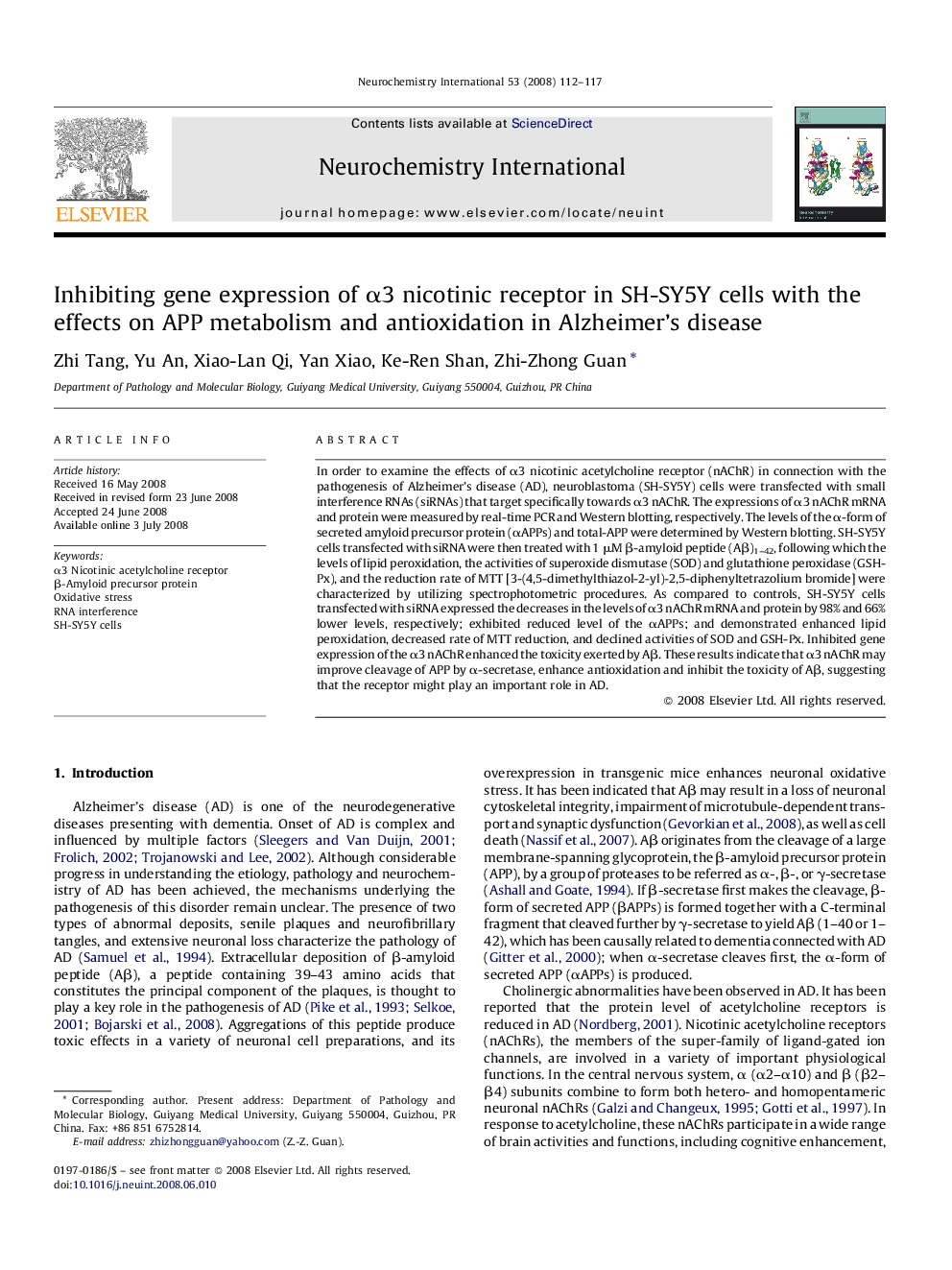| Article ID | Journal | Published Year | Pages | File Type |
|---|---|---|---|---|
| 2201104 | Neurochemistry International | 2008 | 6 Pages |
In order to examine the effects of α3 nicotinic acetylcholine receptor (nAChR) in connection with the pathogenesis of Alzheimer's disease (AD), neuroblastoma (SH-SY5Y) cells were transfected with small interference RNAs (siRNAs) that target specifically towards α3 nAChR. The expressions of α3 nAChR mRNA and protein were measured by real-time PCR and Western blotting, respectively. The levels of the α-form of secreted amyloid precursor protein (αAPPs) and total-APP were determined by Western blotting. SH-SY5Y cells transfected with siRNA were then treated with 1 μM β-amyloid peptide (Aβ)1–42, following which the levels of lipid peroxidation, the activities of superoxide dismutase (SOD) and glutathione peroxidase (GSH-Px), and the reduction rate of MTT [3-(4,5-dimethylthiazol-2-yl)-2,5-diphenyltetrazolium bromide] were characterized by utilizing spectrophotometric procedures. As compared to controls, SH-SY5Y cells transfected with siRNA expressed the decreases in the levels of α3 nAChR mRNA and protein by 98% and 66% lower levels, respectively; exhibited reduced level of the αAPPs; and demonstrated enhanced lipid peroxidation, decreased rate of MTT reduction, and declined activities of SOD and GSH-Px. Inhibited gene expression of the α3 nAChR enhanced the toxicity exerted by Aβ. These results indicate that α3 nAChR may improve cleavage of APP by α-secretase, enhance antioxidation and inhibit the toxicity of Aβ, suggesting that the receptor might play an important role in AD.
